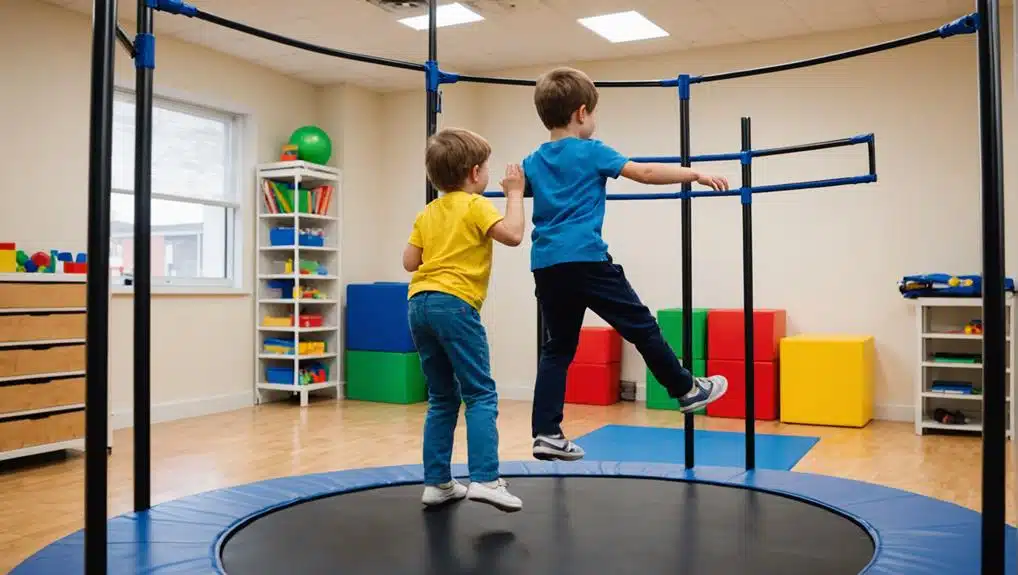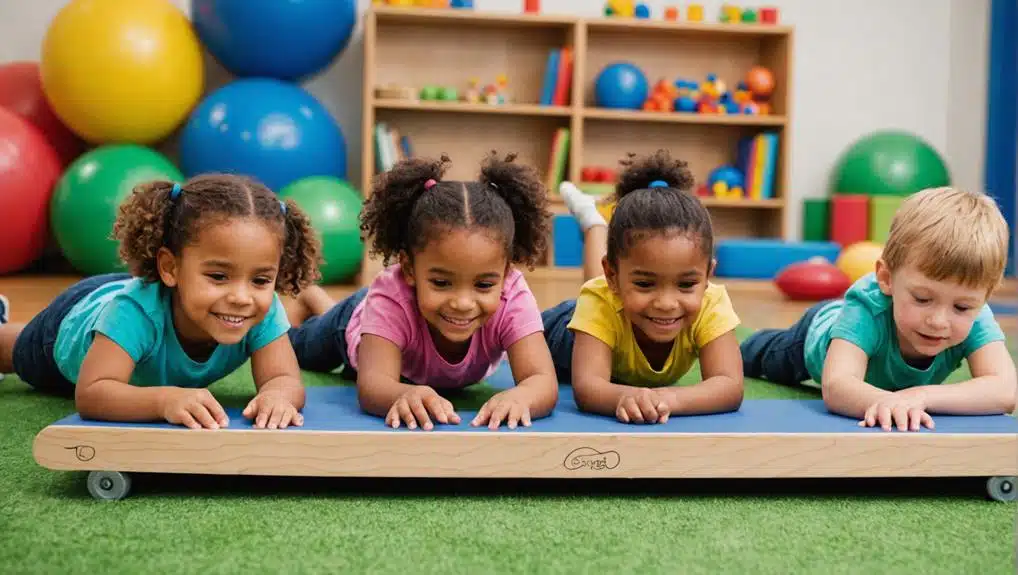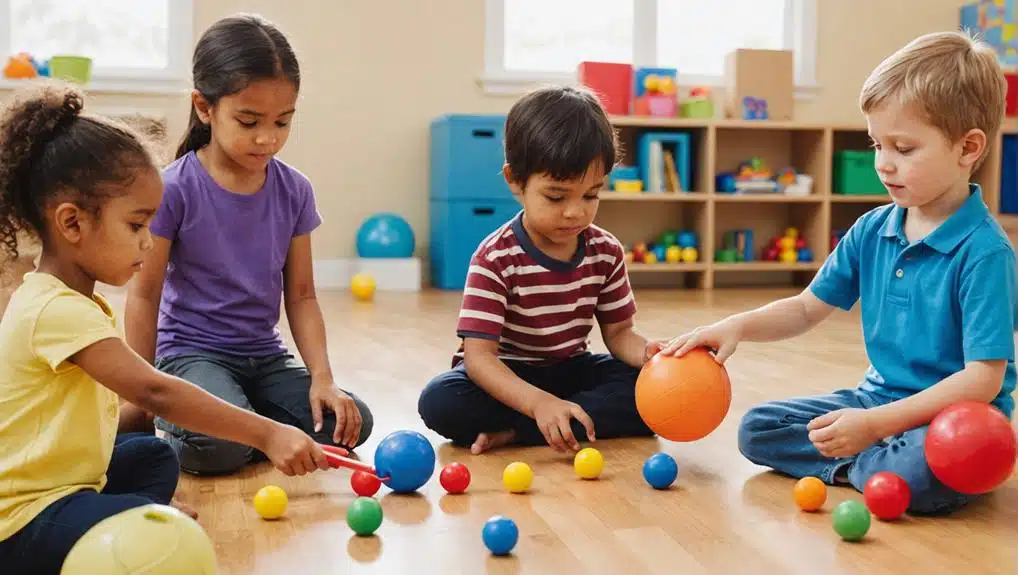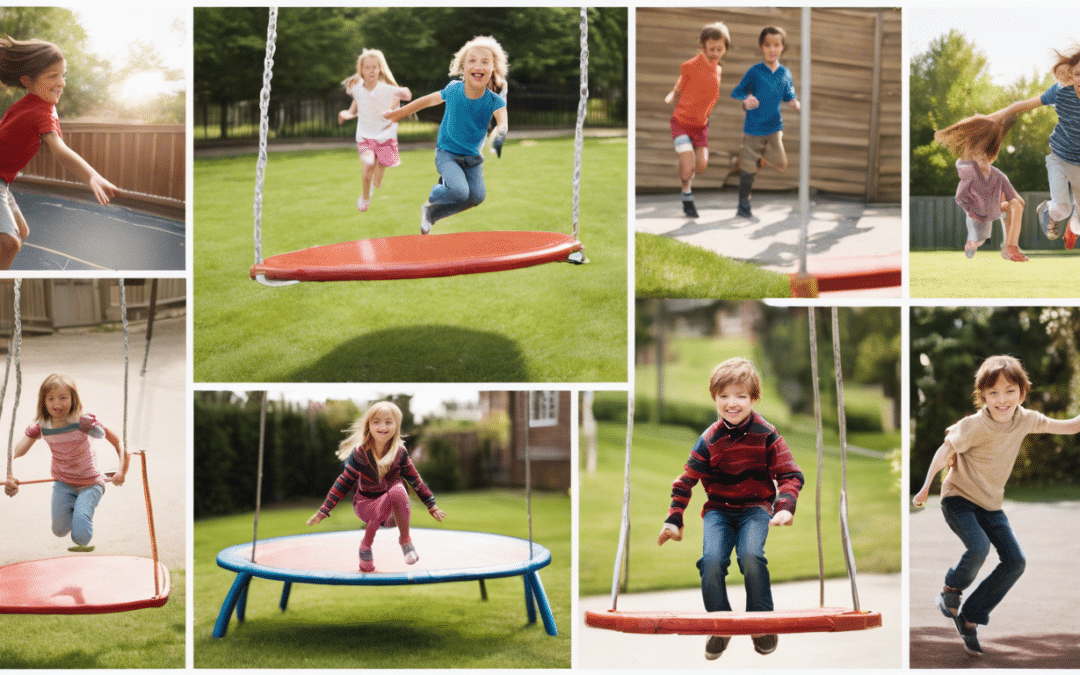At our pediatric therapy center, we know how vital motor skill development is for a child’s growth and confidence. Activities like bike riding, rope skipping, and tree climbing are more than just fun—they help children build strength, coordination, and agility by engaging their large muscle groups. These skills form the foundation for everyday movements and play, and when developed early, they can set children on a path to lifelong physical fitness and confidence.
The good news is that integrating these activities into a child’s daily routine doesn’t have to be complicated. Small changes, like encouraging outdoor play or participating in structured physical activities, can make a big difference. Early intervention is critical. The earlier we start working on motor skill development, the easier it is to address delays and build the strength and coordination children need to thrive.
Every child deserves the chance to reach their full potential. By focusing on motor skill development through engaging, purposeful activities, we can improve not only their physical fitness but also their overall well-being and self-esteem. Let’s work together to create opportunities for your child to grow stronger, more confident, and ready to take on life’s adventures! Early action makes all the difference—start today and watch your child soar.
Key Takeaways
- Incorporating jumping exercises can foster agility, muscle strength, and cardiovascular fitness in kids.
- Encouraging core strength exercises can improve balance, posture, and endurance, benefiting both gross and fine motor skills.
- Activities that enhance flexibility and balance can boost body awareness, stability, and athletic performance.
- Hand-eye coordination drills can support precision, accuracy, and cognitive skills, which are vital for sports performance and academic tasks.
- Full-body workouts that engage multiple muscle groups can promote overall physical strength, agility, coordination, and a positive attitude toward physical fitness.
Understanding Gross Motor Skills
Often overlooked, gross motor skills actually form the basis for many daily activities and functions in children. These skills involve the use of large muscle groups for actions such as walking, running, and jumping. In fact, activities like hopscotch and obstacle courses can significantly improve a child’s balance, coordination, and cognitive skills. The very essence of childhood play often revolves around exploring these capabilities, paving the way for improved muscle strength, coordination, and body awareness.
Gross motor skill development is a dynamic process, with each new achievement serving as the groundwork for the next. Challenges in acquiring these skills can significantly impact a child’s ability to perform tasks independently, participate in physical activities, and even interact with peers in social play scenarios.
Gross motor skills are not just about physical well-being but also profoundly influence academic learning. For example, a child’s ability to sit upright at a desk, maintaining balance and posture, is a direct result of gross motor development. Early investment in building these skills promotes enhanced endurance and coordination, laying the foundation for overall physical health.
Importance of Gross Motor Skills
Gross motor skills play a crucial role in children’s daily functions, impacting a variety of essential tasks, from walking and running to participating in playground activities that improve coordination and strength. They not only boost overall growth and learning, but they also enhance physical abilities and cognitive development. Additionally, these skills have a significant impact on academic learning, influencing children’s posture and ability to maintain attention. These abilities are essential to children’s self-care tasks, such as dressing themselves, maintaining endurance throughout the day, and even participating in sports and other physical activities, thereby promoting their overall physical health.
Everyday Functional Impact
Undoubtedly, the advancement of gross motor abilities plays a crucial role in a child’s daily life, both within and beyond the educational environment. These abilities, encompassing walking, running, and engaging in playground activities, necessitate the child’s complete body coordination, core strength, and stability. Tasks such as challenging courses and leaping games, specially crafted to boost these abilities, can significantly enrich spatial awareness and coordination alongside muscle strength and endurance.
It’s not just about having fun or staying active; these abilities have a direct impact on academic learning. A child with well-established gross motor skills can uphold good posture, sustain attention in class, and actively join in sports. Furthermore, these skills are essential for self-care duties such as dressing, which nurture a sense of autonomy and assurance in children.
Nevertheless, any lag in developing these abilities can result in challenges in managing a full school day and executing age-appropriate self-care responsibilities. This is where intervention strategies like Occupational Therapy and Physiotherapy come into action. They aim to tackle any gross motor skill challenges and support overall well-being, thereby boosting the child’s functional capacities in the everyday context.
Gross Skills in Academics
Cultivating fundamental motor skills in children is not limited to improving their physical capabilities; it also plays a vital role in their academic performance. These skills impact academics by influencing a child’s posture, attention, and overall preparedness for classroom activities.
Engaging in trampoline activities or games of hopscotch can boost balance and coordination and even contribute to a child’s understanding of numbers and timing. This integration of physical and cognitive tasks can lead to improved academic engagement.
A child with fundamental solid motor skills can more easily engage in school tasks, participate in physical education classes, and navigate the school environment with confidence. Well-developed fundamental motor skills are also linked with better focus and concentration, contributing to overall academic success.
Notably, martial arts techniques not only build strength but also improve body awareness and coordination, skills that are essential for handwriting, drawing, and other fine motor skills required in school work. Strategies to enhance motor skills can lead to increased participation in school activities, better self-regulation, and improved academic outcomes.
As such, it is evident that fundamental motor skills and academics are inherently linked. Therefore, it’s significant for parents and educators to incorporate activities that boost fundamental motor development to support not only physical growth but also academic achievement in children.
Identifying Gross Motor Skill Problems
Recognizing gross motor skill problems in children is crucial to their complete development and well-being. Activities that promote fine motor skills play a vital role in this process. One must be aware of potential signs, such as delays in reaching developmental milestones, atypical movement patterns, and decreased endurance. Integrating motor skills activities into a child’s daily schedule can enhance fundamental motor skills for comprehensive development. Tackling these issues early can lead to interventions that improve motor function, thus beneficially influencing a child’s academic success and daily life.
Recognizing Developmental Delays
Gross motor skills play a vital role in child development. They form the foundation for activities such as walking, jumping, and playing sports. Developmental delays in gross motor skills can manifest as delays in reaching these milestones, which can significantly impact a child’s overall physical development and well-being.
Caregivers and educators must recognize these developmental delays early. Gross motor skill problems can be identified through observation of awkward or clumsy movements, low endurance, or a child’s avoidance of physical activities. These issues can also affect a child’s ability to follow instructions for physical tasks and engage in playground activities, which are essential for their social development and self-esteem.
Moreover, gross motor skill problems can have a domino effect, impacting fine motor skills, speech articulation, and even activities of daily living. Thus, recognizing and addressing these issues promptly can be pivotal in nurturing a child’s holistic development. Encouraging physical activities and games can help improve gross motor skills and reduce the potential impacts of these developmental delays.
Understanding Movement Challenges
Understanding movement challenges, specifically significant motor skill problems, necessitates sharp observation and knowledge of child development milestones. It involves recognizing delays in the acquisition of motor skills, as evidenced by awkward or clumsy movements, and often, an avoidance of physical activities. These challenges can directly impact a child’s ability to perform tasks such as writing and drawing and can hinder all activities of daily living.
Significant motor skill problems often coexist with sensory processing issues, speech articulation challenges, and fine motor skill difficulties. This intricate interplay makes it crucial to identify and address these problems early on. A thorough understanding of the child’s functional abilities, combined with a detailed observation of their activities, is essential for accurate identification of significant motor skill problems.
Once identified, seeking intervention through occupational therapy and physiotherapy can effectively address these challenges. These therapeutic modalities focus on improving the child’s abilities through specific activities, ultimately enhancing their motor skills and overall quality of life. By understanding and addressing movement challenges, we can significantly contribute to the child’s motor skill development and their ability to navigate the world around them.
Addressing Low Endurance
As we transition from general movement challenges to specific gross motor skill issues, one key area of focus is addressing low stamina in children. Low stamina can indicate underlying gross motor skill issues and may result in tiredness, decreased participation in sports, and limited physical play. Consequently, identifying and addressing low stamina is essential for overall skill development and peak daily functioning.
- Recognize the issue: Acknowledging low stamina’s presence is the initial step in addressing it. Watch for signs such as quick exhaustion or reluctance to engage in physical activities.
- Develop a strategy: Formulate a plan of targeted activities designed to boost stamina gradually. This could involve structured physical activities like swimming, biking, or running games that challenge and enhance stamina over time.
- Track progress: Monitor improvements in stamina. Celebrate progress, regardless of how minor, to keep the child motivated and involved in the process.
Effective Strategies for Improvement
A robust approach involving a mix of critical exercises is crucial to fostering gross motor skill development in children. This incorporates cardiovascular exercises, such as jumping jacks and scissor jumps, which improve coordination and stamina. The exercises should be tailored to match varying fitness levels, engaging multiple muscle groups to strengthen lower body power.
Equally crucial is the development of core stability. Activities such as ‘ball it and bounce,’ ball rolls, and plank variations can greatly enhance balance and stability. These gross motor activities not only build muscular strength but also promote overall body control.
Furthermore, incorporating toe-touching drills and stretching routines like the ‘cat and cow’ stretch can boost flexibility and balance. These activities improve body awareness and coordination, which are essential components of gross motor development.
Simultaneously, fine motor development can be stimulated with activities like ball rolls and ‘ball it and bounce’ exercises. These exercises refine hand-eye coordination and grip strength, which is crucial for tasks requiring precision.
Therapy Options and Impact

“Therapy Options and Impact” investigates the role of occupational therapy and physiotherapy in enhancing gross motor skills in children. This section will analyze these therapeutic approaches, their specific techniques for improving core strength, balance, and coordination, and the measurable impacts they have on a child’s academic success. Ultimately, we will articulate the critical importance of these therapy choices in fostering a child’s physical development, independence, and comprehensive well-being.
Occupational Therapy Approaches
Occupational therapy’s power is utilized to promote gross motor skill development in children. This specialized approach maximizes occupational therapy’s flexibility, targeting the specific areas that children need to improve. These include core strength, body awareness, sensory processing, and motor planning, all crucial components of gross motor skills.
Therapeutic interventions are designed to boost motor skills through a myriad of approaches. Here are three notable methods:
- Sensory Integration: This involves providing children with varying sensory experiences to optimize their ability to process sensory information effectively, leading to improved gross motor responses and actions.
- Task Analysis: This includes breaking down activities into smaller, manageable tasks to help children understand and execute them better. This improves their gross motor skill development.
- Cognitive Planning: This includes helping children understand and plan their actions and enhancing their motor planning abilities.
These occupational therapy interventions not only develop gross motor skills but also enhance coordination, balance, and posture. The impact is significant, with children becoming better equipped to participate in daily activities and sports.
Physical Therapy Approaches
Physical therapy focuses on improving gross motor skill development through targeted strategies that enhance a child’s strength, mobility, and balance. Unlike other therapies, physical therapy hones in on physical movements, helping children overcome challenges related to posture, coordination, and muscle control. These skills are essential for activities like running, jumping, or climbing, as well as everyday tasks like walking and sitting upright.
Physical therapists use a variety of methods to achieve these goals. Here are three notable approaches:
- Strength Training: Building muscle strength through guided exercises helps children gain the stability and power needed for gross motor tasks like climbing stairs or lifting objects.
- Balance and Stability Work: Therapists use tools like balance boards or obstacle courses to teach children how to maintain posture and navigate their environment confidently.
- Gait Training: Therapists develop customized plans for children struggling with walking patterns to improve step coordination and ensure smooth, safe mobility.
These physical therapy interventions not only target motor skill development but also encourage independence, resilience, and a sense of achievement in children, helping them participate more fully in school, play, and sports.
Physiotherapy for Skill Enhancement
Physiotherapy’s therapeutic power can help children noticeably improve their gross motor skills. Physiotherapy offers personalized interventions that address each child’s skill deficits and challenges, using evidence-based techniques to promote strength, coordination skills, and body awareness.
These interventions focus on building strength and endurance, essential elements for performing gross motor activities such as running, jumping, and climbing. Enhanced body awareness aids in balance, a crucial factor in executing coordinated movements, while promoting a better understanding of the child’s physical self in relation to the surrounding environment.
The impact of physiotherapy extends beyond improving gross motor skills. It can lead to increased independence, enabling participation in daily activities that may have previously been difficult. Collaboration with a physiotherapist offers parents and caregivers tailored strategies to support a child’s gross motor skill development, further facilitating their progress.
Physiotherapy for skill improvement underscores the central role of targeted, professional intervention in enhancing gross motor skills in children. By leveraging physiotherapy’s therapeutic potential, we can contribute significantly to improving children’s gross motor skill proficiency, paving the way for their overall growth and development.
Impact on Academic Success
Building on physiotherapy’s foundation in enhancing considerable muscle skills, it’s essential to examine the impact of such improvements on academic success. Research consistently shows that therapies like occupational therapy and physiotherapy, which address considerable muscle skill difficulties, greatly support educational success.
Extensive muscle development plays a vital role in a child’s academic progress in several ways:
- It impacts posture, which is fundamental for classroom tasks like sitting at a desk or participating in physical education.
- It influences attention and focus, both of which sustain a child’s engagement during learning activities.
- It supports overall physical well-being, which is crucial for managing a full school day and performing age-appropriate self-care tasks.
Untreated considerable muscle skill challenges can hinder academic progress. By contrast, supporting small muscle skills improves agility and coordination, leading to better handwriting and other classroom tasks, thus enhancing academic success. In addition, community activities like karate, gymnastics, swimming, dance, or sports can promote extensive muscle skill development while fostering academic achievement. Hence, addressing considerable muscle skill difficulties is not just beneficial but necessary for academic success.
Jumping Exercises and Benefits
Jumping exercises play a crucial role in children’s physical development. Exercises like Jumping Jacks, scissor jumps, and rocket jumps not only enhance cardiovascular fitness but also improve agility and coordination in children. Tailored for different fitness levels, these activities engage multiple muscle groups, especially those in the lower body, thereby strengthening them and challenging balance.
Jumping exercises contribute significantly to overall physical well-being. They do more than build muscle; they also help to develop core strength and improve stability. Interestingly, these activities can also stimulate cognitive function, increasing attention and focus in children.
Incorporating jumping exercises into a child’s routine can lead to a variety of benefits. Regular practice of such activities can promote confidence and coordination and foster a positive attitude towards physical fitness. Additionally, it can boost endurance and contribute to better posture.
Core Strength Exercises and Impact

Strengthening the core through exercises such as planks and sit-ups can significantly improve a child’s stability, posture, and balance. Core strength forms the basis for all movement and plays an essential role in the development of gross motor coordination. It boosts a child’s ability to participate in physical activities like running, jumping, and climbing with greater endurance and less risk of injury.
Developing a solid core goes beyond merely improving gross motor skills. It also directly influences a child’s fine motor skills, thereby facilitating better hand-eye coordination. For example, a stable core supports a child’s upper body, enabling more precise arm and hand movements.
To highlight the impact of core strength on a child’s physical growth, consider the following:
- Strengthened core leads to better body alignment and posture, reducing the risk of musculoskeletal injuries.
- A strong core supports the development of gross motor coordination skills, thus enabling children to perform complex movements with ease.
- Core strength supports the development of fine motor skills, which are vital for tasks requiring agility and precision.
As caregivers, we must incorporate core strengthening exercises in children’s routines for thorough motor skill development.
Developing Flexibility and Balance
Fostering adaptability and equilibrium in children through targeted exercises is a crucial part of gross motor skill development. These drills, such as toe-touching and cat-cow stretches, contribute to a broader range of motion and stability, which ultimately enriches posture and diminishes the risk of injury. Incorporating adaptability and equilibrium exercises into a child’s routine not only promotes general physical well-being but also instills body awareness, which is essential for fine motor skills development.
Adaptability exercises like barrel rolls and stretching routines significantly contribute to better body alignment, coordination, and upper body strength. These all aid in achieving improved body awareness and in performing daily activities with ease and confidence. On the other hand, equilibrium drills can advance athletic performance and further assist in gross motor skills development.
The following table summarizes the benefits of adaptability and equilibrium drills:
| Adaptability Drills | Equilibrium Drills |
|---|---|
| Enrich the range of motion | Improve stability |
| Enhance posture | Reduce injury risk |
| Improve body alignment | Enhance coordination |
| Develop upper body strength | Boost athletic performance |
| Foster body awareness | Promote general physical well-being |
These activities should be planned carefully to guarantee maximum benefit and safety.
Hand-Eye Coordination Drills

Hand-eye coordination exercises are tasks designed to promote the synchronization of visual input with hand movements. These exercises play a crucial role in enhancing precision, timing, and accuracy in motor tasks, thereby improving sports performance, academic skills, and everyday tasks.
- Catching and Throwing Balls: This exercise requires a child to visually track the ball and coordinate their hand movements to catch or throw it. It’s a great way to enhance both fine motor skills and hand-eye coordination.
- Playing Target Games: Games that require aiming at a target can effectively boost a child’s hand-eye coordination. These could include activities like dart throwing or shooting hoops.
- Solving Puzzles: Puzzles demand children to visually identify the correct piece and use their hands to fit it into the right location, enhancing their problem-solving skills and hand-eye coordination.
Consistent practice of hand-eye coordination exercises can improve motor skills, focus, and cognitive abilities in children. Incorporating these exercises into a child’s routine can help them master complex motor tasks with ease and confidence, preparing them for success in diverse areas of life.
Fun Full-Body Workouts for Kids
Building upon the foundation of hand-eye coordination drills, our exploration now turns to fun full-body exercises for kids, another important aspect of rapid gross motor skill enhancement. Full-body exercises, including mountain climbers and plank variations, are crucial in engaging multiple muscle groups, thereby promoting overall physical strength, cardiovascular fitness, and endurance in children.
The importance of enjoyable and captivating activities, such as rocket jumps and jumping jacks, cannot be understated. These activities not only encourage a positive attitude towards physical fitness but also act as a catalyst for improving agility, explosive power, and coordination. The dynamic nature of these exercises is key in keeping children motivated and involved in the process of motor skill improvement.
Incorporating full-body exercises into a child’s routine has clear benefits for their motor skills, agility, and overall physical health. A holistic approach that includes these workouts can significantly accelerate gross motor skill development in kids. The combination of hand-eye coordination drills and full-body exercises creates a balanced development program, laying a solid foundation for future physical activities and sports.


Recent Comments